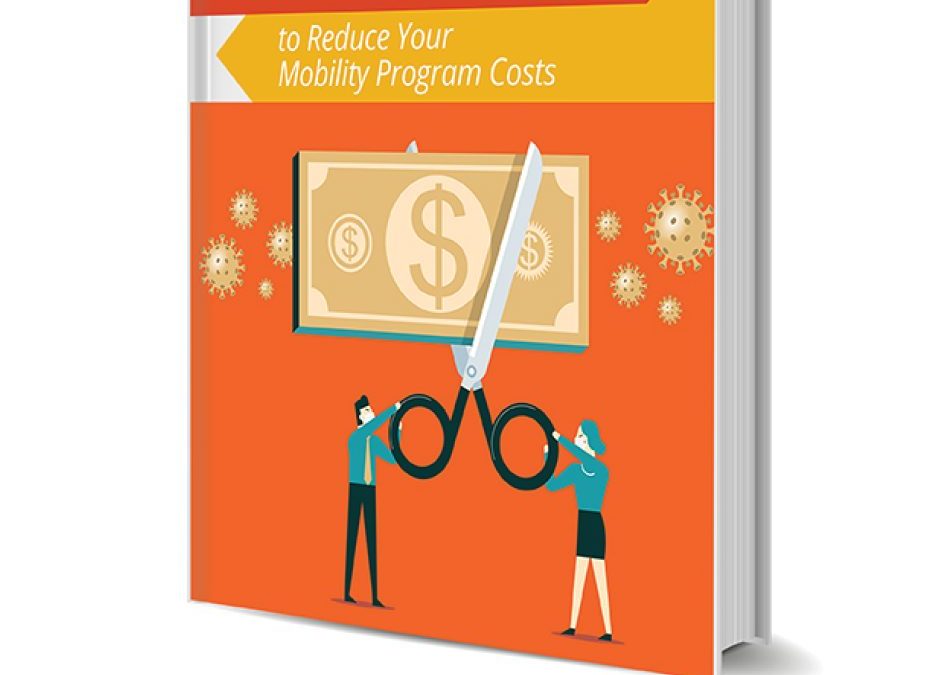
The pressure to reduce global mobility services costs began before the current pandemic, but Covid-19 is certainly accelerating that process. As we slowly return to normalcy, companies will want to consider how they can preserve some of these cost savings while still achieving their talent management and business objectives.
Cost-reduction initiatives are definitely not one size fits all. In this eBook, we suggest areas to review. And while not all will apply to your company, with almost any corporate relocation program, there is at least some opportunity for cost savings.
1. Analyze Your Historical Costs
Before you can identify cost saving opportunities, you will need to analyze your historical relocation and assignment spend. Examine the final costs of moves versus the original cost projections and look for any patterns. Your relocation management company (RMC) can help you with this assessment. The idea is to uncover patterns and areas of unusual spend or rapidly increasing costs. Once you identify these areas, you can probe further to uncover potential areas for cost savings.
2. Assess Your Current Policies
Do your domestic and international relocation policies reflect your current and anticipated mobility needs and budget constraints? Sometimes dated benefits designed to address obsolete concerns lurk in older policies. For example, in today’s environment of very low mortgage rates, a mortgage buydown (or the coverage of points) would be inappropriate. In a strong real estate market, a guaranteed buyout program might not be necessary; a BVO could suffice. Alternatively, you might consider offering a guaranteed buyout at the executive level or by exception only. A traditional expat assignment will usually cost more than a permanent transfer or a virtual assignment.
3. Ask Your Relocation Management Company to Review Your Policies
If you are working with a relocation management company, ask your provider to review and perhaps to benchmark your relocation policies against your peers. Ask for specific cost-saving recommendations. You want to offer sufficient benefits to remain competitive and even to retain a leg up, but you do not want to be overly generous or to offer benefits that are no longer necessary.
4. Talk to Your Mobile Workforce
Learning more about your mobile employees’ relocation experience, through both survey data and follow-up conversations, can help you make informed program decisions. Which services did your employees use and which were not meaningful to them? What worked for them—and what did not? Would they have preferred a different type of assistance—one that might even cost less than what they received? Gathering this real-world information can help you to refine your program and reset the balance between cost and customer experience.
5. Think About How Remote Work Will Affect Your Program and Budget
The COVID pandemic has greatly accelerated the trend of professionals working remotely. It is worth considering how remote work will fit into your evolving talent management plan—and how this will affect your relocation program costs. It is a safe bet that HR professionals going forward will need to make a stronger case as to why an employee needs to relocate physically. In some cases, remote work with as-needed business travel will accomplish the same business objective at a lower cost. In other cases, it will be essential or desirable to have the employee physically on site. (Be cautious in planning for routine visits to an out-of-state or out-of-country office as this can create compliance headaches for your company and the employee.)
6. Use Policy Tiers Thoughtfully
Many companies tier their policies, with tiers typically differentiated by job grade or homeowner/renter status. There is also a trend to have a dedicated “executive” tier for higher-level employees. Mission critical employees should receive the most generous packages, both as an inducement and a reward. New hires and employees on rotational assignments typically receive a less generous package. Employees moving by choice might receive limited or no benefits.
7. Rethink Allowances
You also might consider reducing or re-aligning relocation or miscellaneous allowances, rather than offering a flat amount. These allowances can follow the logic of your policy tiers. For developmental assignments, some allowances might not be necessary at all. A more aggressive (and politically challenging) change would be to scale all of your allowances at all levels down one notch.
8. Get a Handle on Exceptions
Companies and relocation management companies want relocating employees to have an outstanding customer experience, but reflexively approving policy exceptions can increase relocation costs markedly. You should track all approved exceptions and look for patterns. In some cases, repeated exception requests could mean that benefit is inadequate and the company should revisit it. In other cases, employees will simply test the waters to see if their relocation benefits are negotiable.
More Ways to Reduce the Costs of Relocation Program
Effectively managing corporate relocation program costs requires a comprehensive approach and these are just a few recommendations to get started as you consider your company’s culture and overarching talent management objectives. To read all 16 Suggestions for Reducing Relocation Costs, download the eBook.




